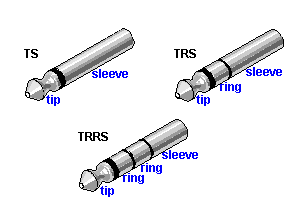hppants
Well-known member
One or more of my audio cables for my ampli-rider setup (4 total) is crapping out. I can't figure out which one because I wiggle all of the connections and everything sounds great. Then I take off and between 5 seconds and 15 minutes later, I start hearing crackling and cutting out and holy **** is this pissing me off. Of course, the way I've installed it makes the system very weather proof, but I have to dissassemble 1/2 the bike to work on it. So I'm going to replace all 4 cables:
The questions:
1. What I think I'm dealing with is what we used to call 1/8" DIN - is what they now call 3.5 mm the same stuff?
2. When a cable is sold as "3 feet long", is that measurement "tip to tip" or cable lenght without connectors, or what? My current cables don't measure up either way.
3. Can somebody reccomend a ULTRA high QUALITY cable manufacturer for this? I'd rather pay a little more and get something that has the best shot to last.
Tx.
The questions:
1. What I think I'm dealing with is what we used to call 1/8" DIN - is what they now call 3.5 mm the same stuff?
2. When a cable is sold as "3 feet long", is that measurement "tip to tip" or cable lenght without connectors, or what? My current cables don't measure up either way.
3. Can somebody reccomend a ULTRA high QUALITY cable manufacturer for this? I'd rather pay a little more and get something that has the best shot to last.
Tx.















![fjackets Real Lambskin Leather Biker Jacket — Quilted Cafe Racer Zip Up Moto Leather Jackets For Men | [1100085] Johnson Brown, XL](https://m.media-amazon.com/images/I/41I7Pm1f+vL._SL500_.jpg)
















































